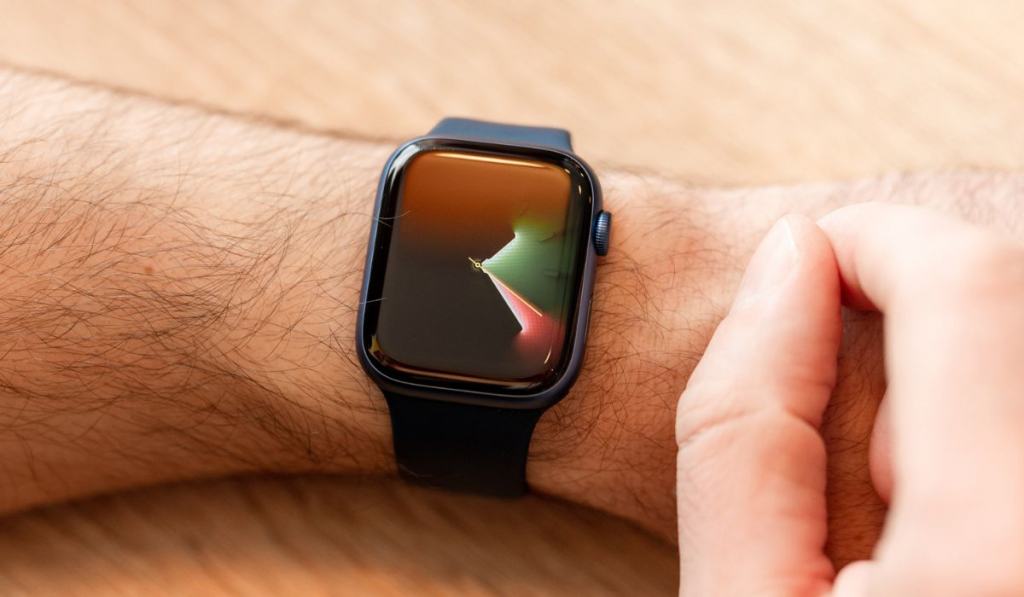Why Is Your Apple Watch Stuck In Power Reserve Mode?
The Apple Watch provides users with a handful of very useful features and tools, one of which is Power Reserve mode. This feature can be used to save battery by limiting features when the watch is nearly dead. But what should you do if your Apple Watch gets stuck in Power Reserve mode?
An Apple Watch might get stuck in Power Reserve mode because it was manually turned on or the battery is too low. You’ll need to restart or fully charge the watch to exit Power Reserve mode. Use an official Apple-supported charger to prevent issues.
Don’t panic if your device is stuck in the Power Reserve setting. This is a common issue for some Apple Watch models, including the Apple Watch SE and Apple Watch Series 5. Thankfully, fixing the issue shouldn’t be too hard. Let’s take a look at exactly what you need to do.
Why Is My Apple Watch Stuck in Power Reserve Settings?

The Apple Watch (on Amazon) might enter the Power Reserve mode when the battery reaches 10% or lower. The Power Reserve setting is in place to save your battery life by disabling features other than the time. But the Apple Watch might get stuck in Power Reserve mode for a couple reasons:
- You’re using manual Power Reserve features: An Apple Watch might be stuck in Power Reserve settings because the feature was manually turned on. The feature might be manually enabled if you don’t see a red lightning bolt icon next to the time.
- Your Apple Watch battery is too low: An Apple Watch might be stuck in Power Reserve settings because your battery is critically low. Your battery might be too low if you notice a small red lightning icon next to the time.
Can I Still Receive Messages in Power Reserve Settings?
Unfortunately, you can’t receive messages while the Apple Watch is in the Power Reserve setting. The Power Reserve feature disables any advanced features or apps in the background, including messages.
You can still use the device as a typical watch and view the time, but you won’t have access to anything else until you exit Power Reserve features.
How to Turn Off Power Reserve Features
Unfortunately, there isn’t a simple button to turn off the Power Reserve setting. You’ll need to restart the Apple Watch to disable Power Reserve mode.
To restart the Apple Watch, press and hold the side buttons for around 10 seconds. You should notice that the Apple Watch reboots, and the Apple logo should appear on the screen.
Note: You might need to charge the Apple Watch before it will reboot as expected if the battery is almost drained. The Apple Watch only takes about 20 to 30 seconds to fully restart in most cases. However, a force restart can take about a minute to complete in some cases.
How to Troubleshoot Your Apple Watch
There are several measures you can take to resolve Power Reserve issues. Here are some troubleshooting methods you can use for the Apple Watch.
Make Sure Your Watch Is Charged
Low battery life might be one of the reasons the Apple Watch is stuck in the Power Reserve tool or why the device uses the feature frequently. Ensure you’re charging the Apple Watch regularly to prevent issues.
Wait between 60 to 180 minutes to fully charge your device after placing it on the charger. If you don’t have enough time to charge it completely, give the device between 10 to 15 minutes and finish later on.
Use the Correct Charger
Third-party charging accessories can create charging issues and cause your device to enter the Power Reserve setting.
Always use an official Apple charger, like the Apple Watch Magnetic Charger (on Amazon), when possible. Alternatively, you can use the USB Type C cord that’s included with your device. Be careful though not to charge the Apple Watch with your iPhone.
Troubleshoot Your Charger and Watch
Ensure the Apple Watch charger or USB-C cable is working correctly. Check that it’s correctly plugged into a wall outlet and USB connection. Consider a different charging device, wall outlet, or USB connection to see if the issue is resolved.
You’ll need to inspect the rear side of the Apple Watch for any dust, debris, or damage. Be sure the charger’s magnets line up with the Apple Watch.
When to See a Professional
If the troubleshooting methods above don’t work, you’ll need to consult Apple Customer Support for additional assistance. The most common Power Reserve issues are on the Watch SE variants and the Series 5 models.
Make sure your Apple Watch and iPhone are using the latest iOS software, try the methods above once more, and consult Apple Customer Support if you’re still encountering issues.
Signs It’s Time to Replace Your Watch
An Apple Watch lasts about three years before the performance starts to decline and the components need to be replaced. However, you might notice signs that your device needs to be replaced before or after three years.
The Battery Life Is Declining
It might be time to replace an Apple Watch if you’ve had it for over three years and you notice a significant performance decline. Your Apple Watch battery might die too fast, or last 60% to 80% as long as it used to. Or the device might randomly shut down or restart.
You Notice Physical Damage

It might be time to replace an Apple Watch if you notice physical damage. You might notice corrosion or damage to the charging port. Alternatively, you might have a cracked screen that needs to be replaced.
You Notice Water Damage
It’s time to replace an Apple Watch if you notice water or moisture damage. You might see moisture beneath the display that causes foggy spots and serious damage. You’ll also need to replace your device if the water lock has been breached.